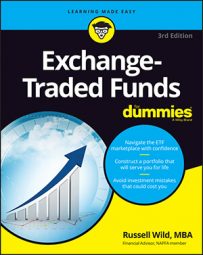It was perhaps foreshadowing, and somewhat ironic, that the very first actively managed ETF was issued by Bear Stearns. That was in March 2008. Within several months, the financial collapse of the investment banking industry, led by Bear Stearns, was well on its way to creating the worst bear market (more irony) of our lifetimes.
That first ETF died, folding (with money returned to investors) in October 2008, as Bear Stearns, after 85 years in business, collapsed and itself folded.
Since that time, we’ve seen the arrival of only about three dozen actively managed ETFs and ETNs. And even those active funds that have appeared have failed to accumulate a whole lot in assets. Here’s why:
Most ETF buyers are indexers by nature. They know that index funds, as a group, do much, much better over time than actively managed funds.
Most ETF buyers want transparency. Active managers, reluctant to reveal their “secret sauce,” have not been too keen to comply with the transparency rules of ETFs, and they’ve been lobbying the authorities to do away with those transparency rules.
Many of the active funds are just plain goofy. Cases in point: the WisdomTree Dreyfus New Zealand Dollar (BNZ), the WisdomTree Dreyfus Indian Rupee ETF (ICN), and a dozen others that deal with currency flux. They are highly speculative and not the kinds of investments into which smarter investors (as most ETF investors tend to be) are going to plunk their money.
A few of the active funds have been issued by relatively unknown and not terribly well-funded companies. An example is Dent Tactical ETF (DENT), based on the strategies of best-selling author and crystal-ball gazer Harry S. Dent, entered the market in 2010 with a performance thud. In its first 13 months, DENT showed a return of about 2 percent annualized, versus about 16 percent for the S&P 500.
Oh, and the DENT ETF charges 1.5 percent a year in management expenses, which, among ETFs, is sort the equivalent of a $380 pair of jeans? The other actively managed ETFs aren’t cheap, either. And that’s part of their problem. A big part.
A good number of ETFs in registration with the SEC are going to be hitting the market shortly (presuming they get the approval they seek). Of these, some will likely be issued by long-standing and respected companies, such as PIMCO (which has already entered the fray with a handful of both passive and actively managed bond ETFs) and T. Rowe Price.
You may be inclined to choose one of these actively managed funds. After all, if you’re going to go active, there’s no reason not to do it with an ETF. The active ETFs will probably wind up being less expensive and more tax efficient than their corresponding mutual funds.
But keep in mind that historically, actively managed funds as a group have not done nearly as well as index funds. That being said, active management may sometimes have an edge, especially in some areas of the investment world (such as commodities and non-Treasury bonds). And much of the advantage of index investing has been in its ultra-low costs — something that actively managed ETFs could possibly emulate.

